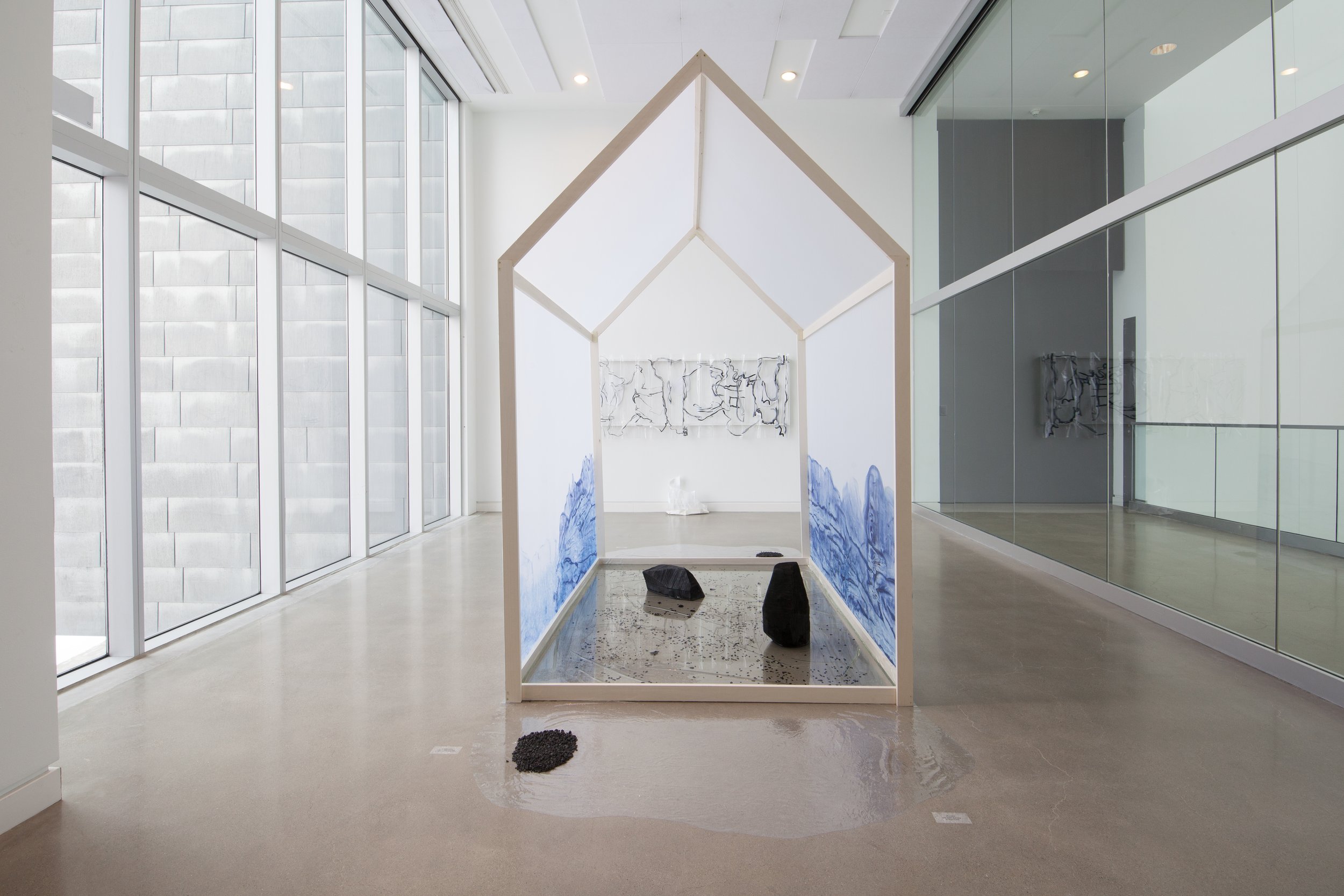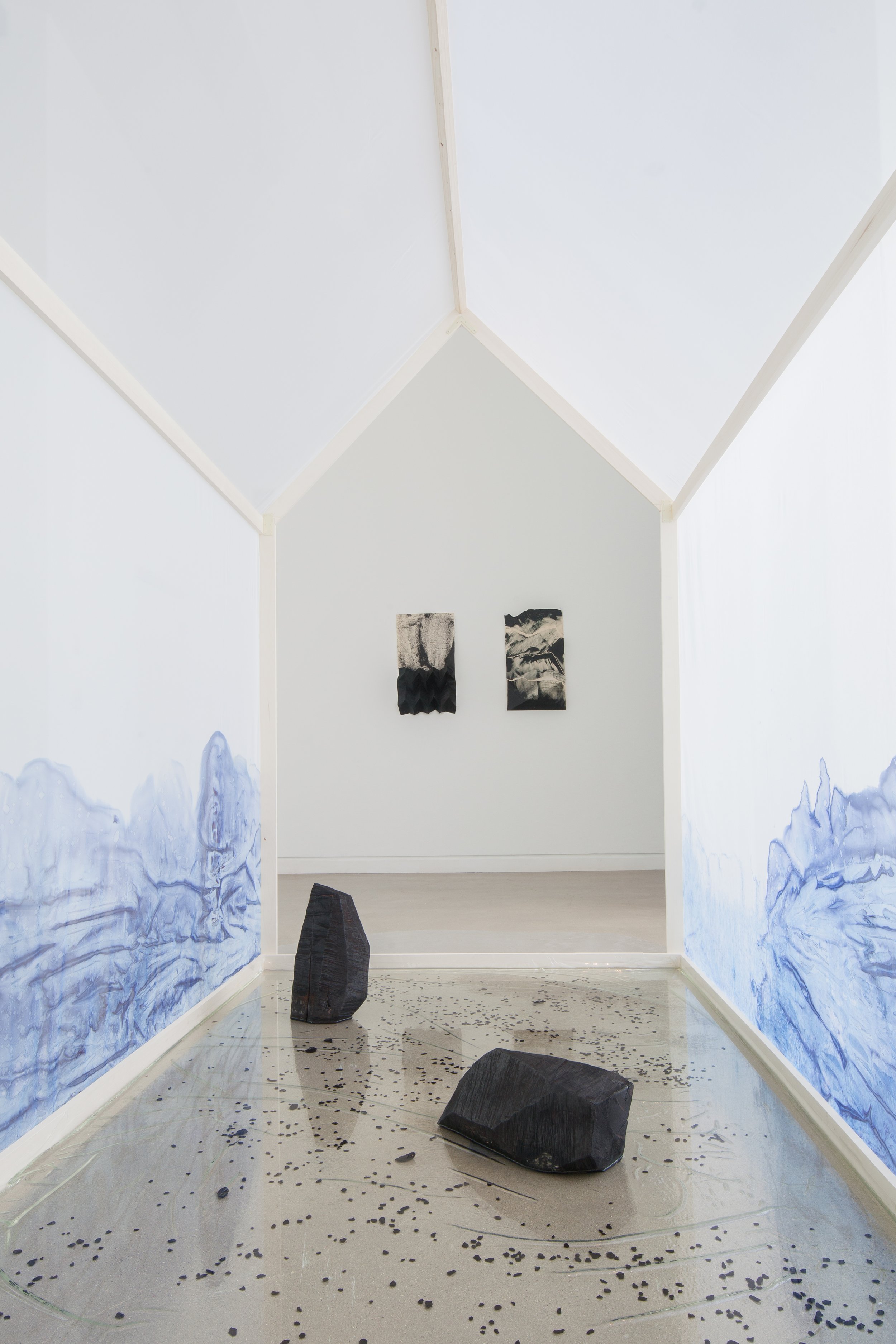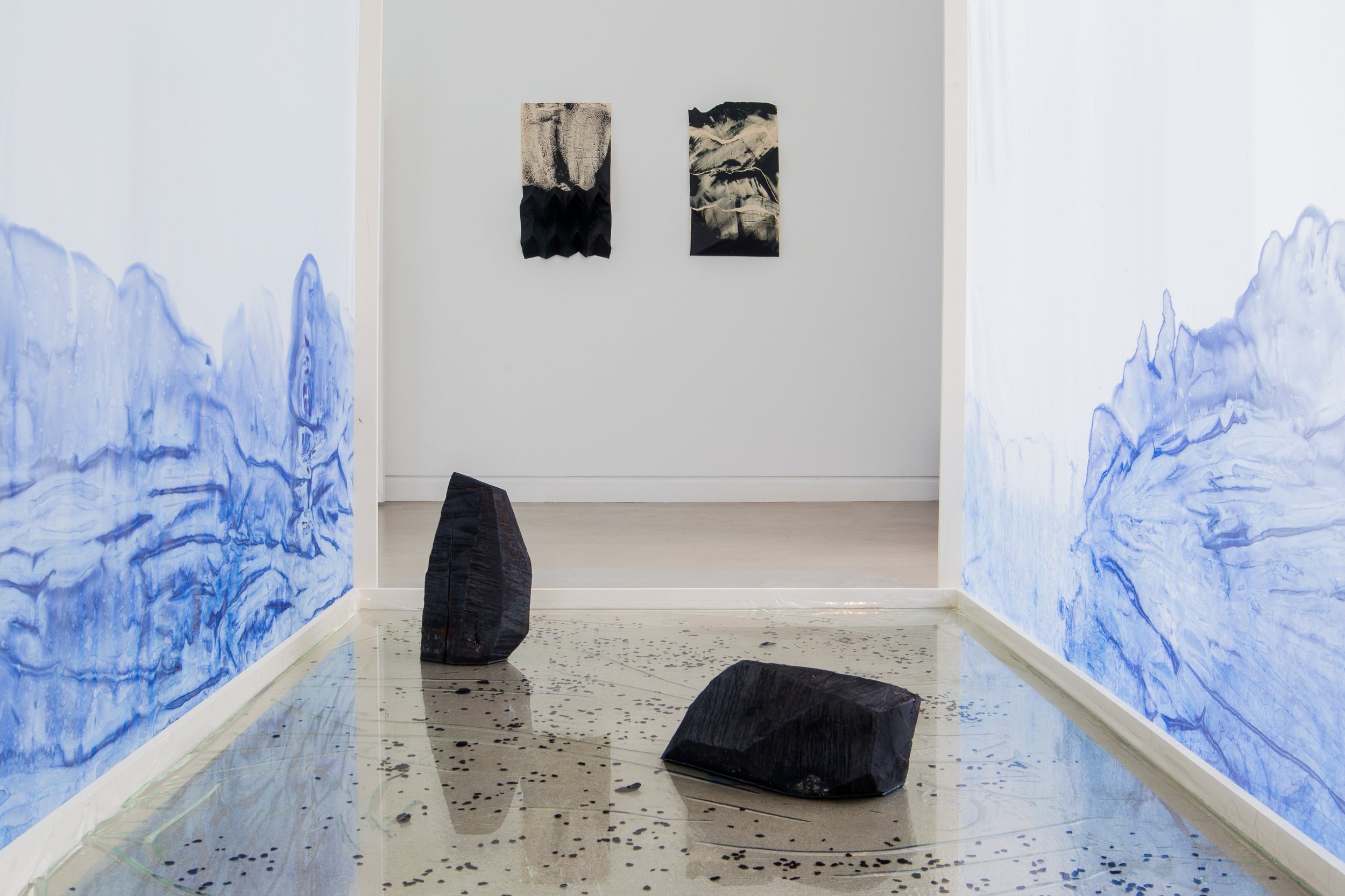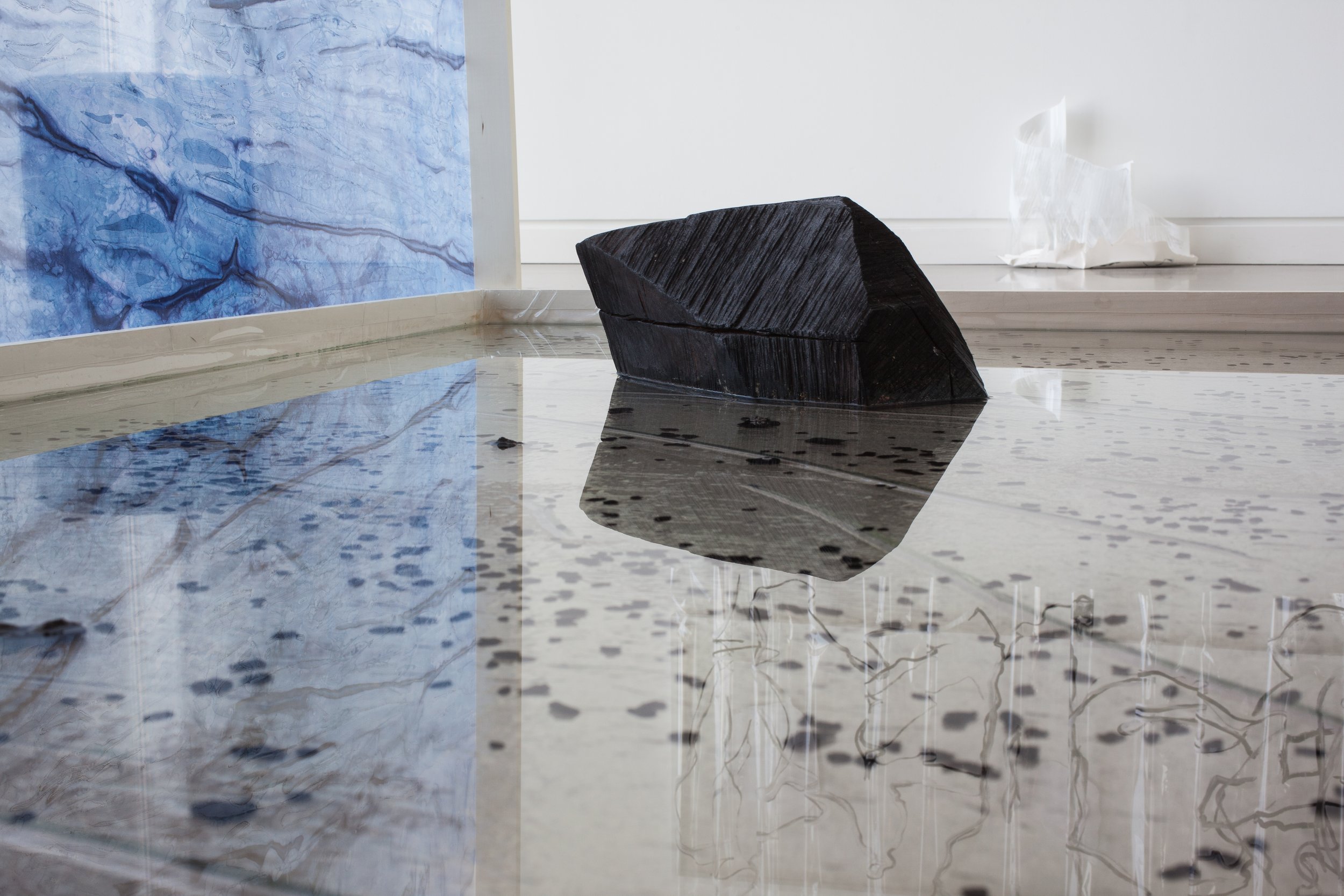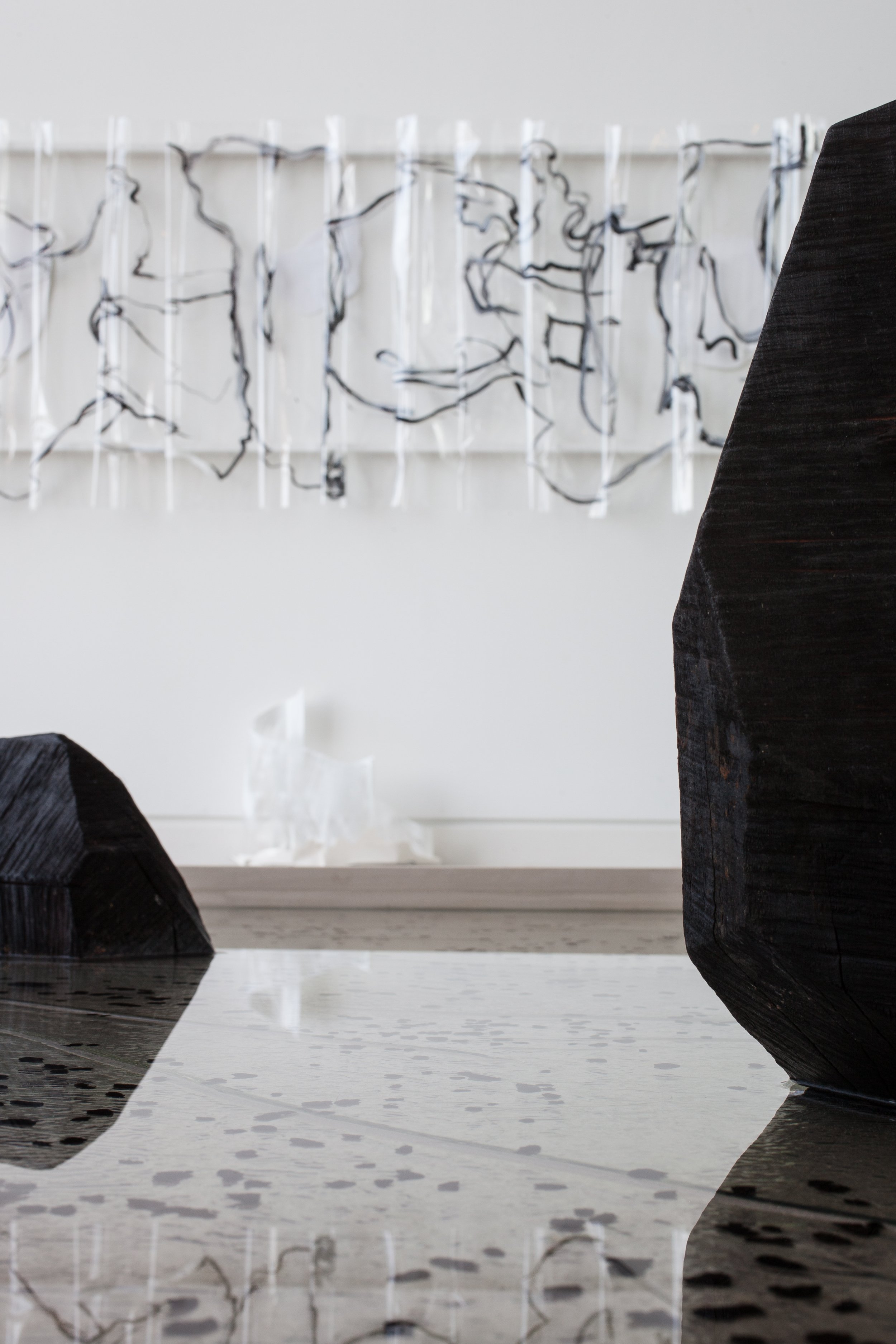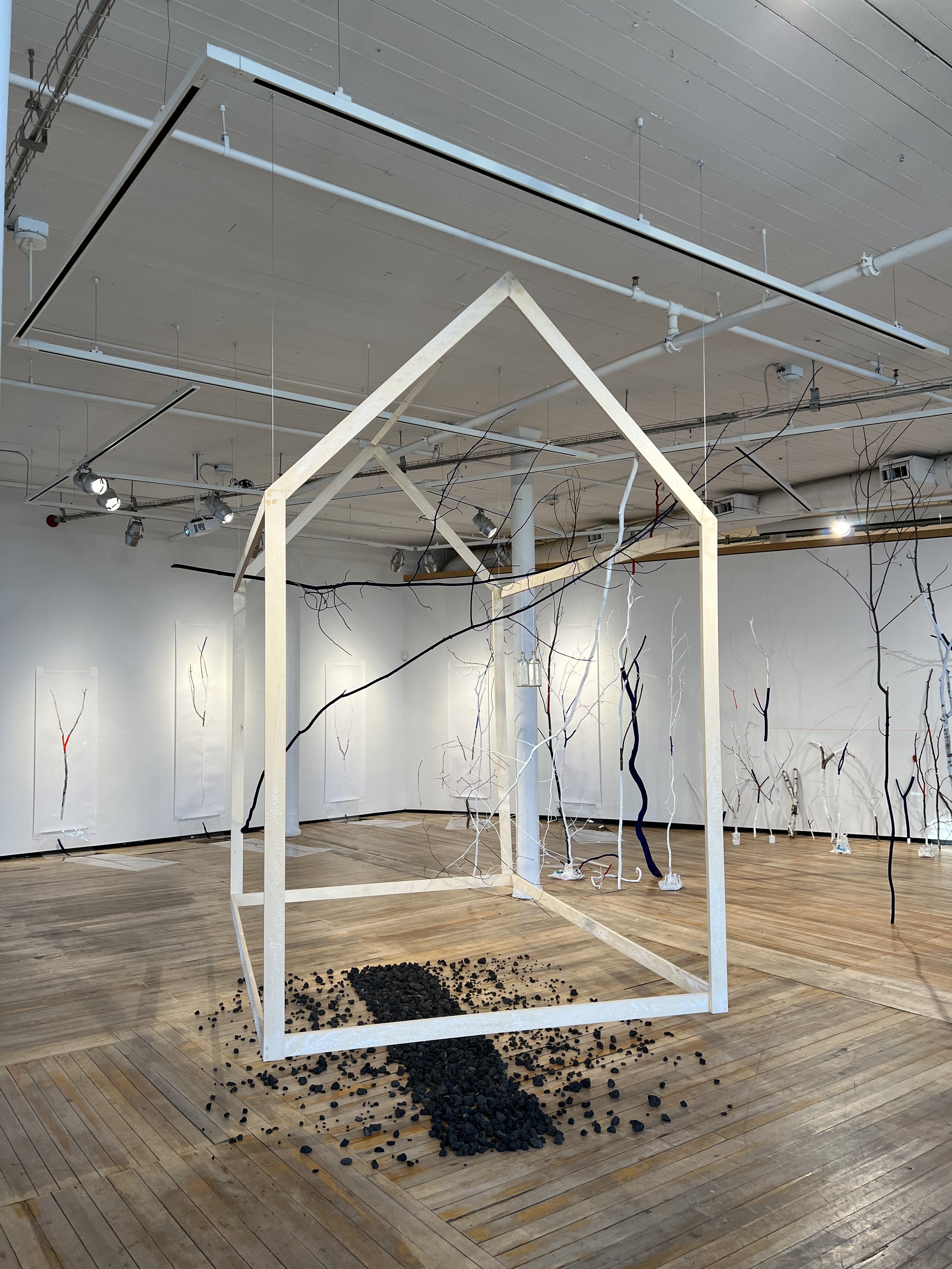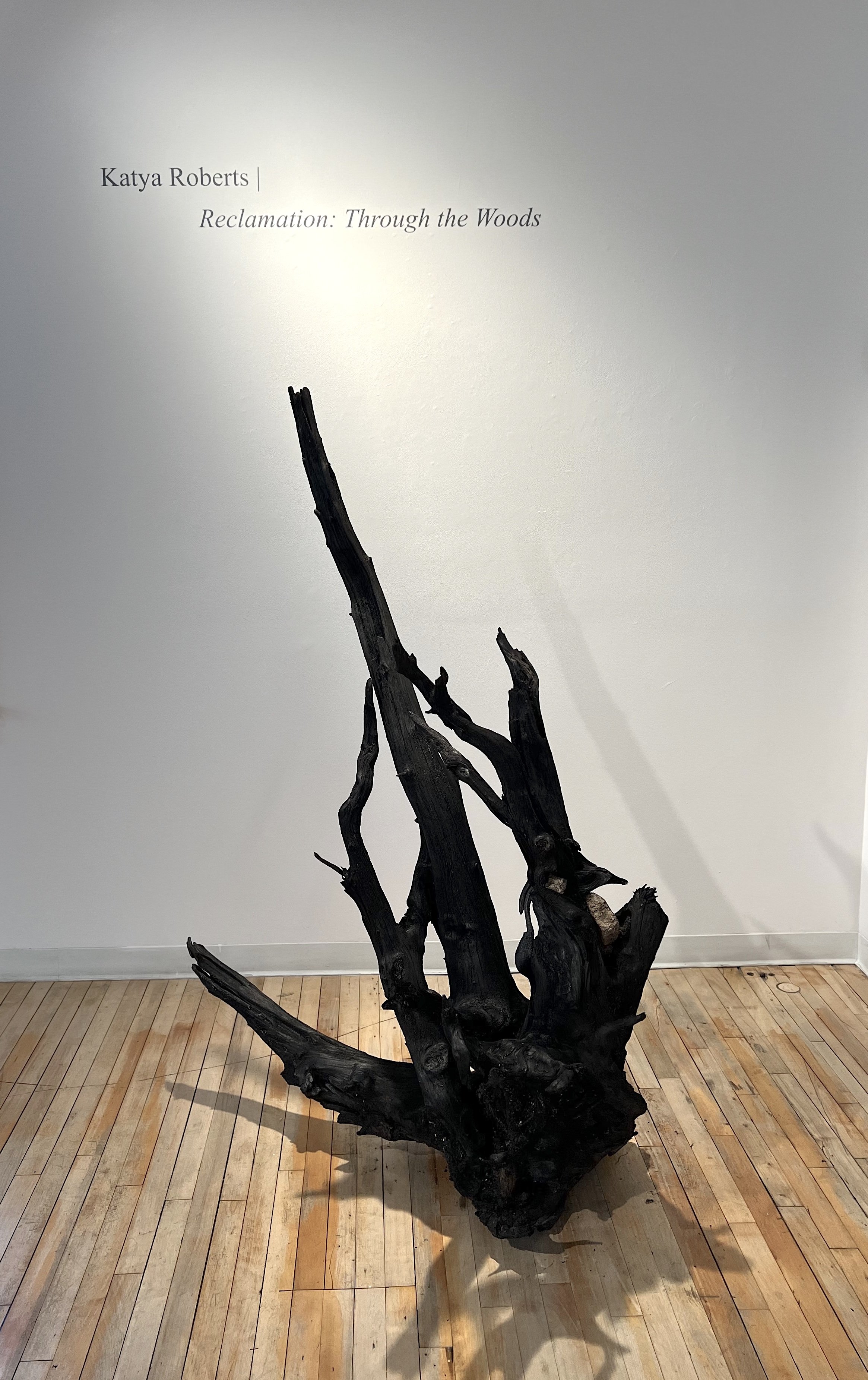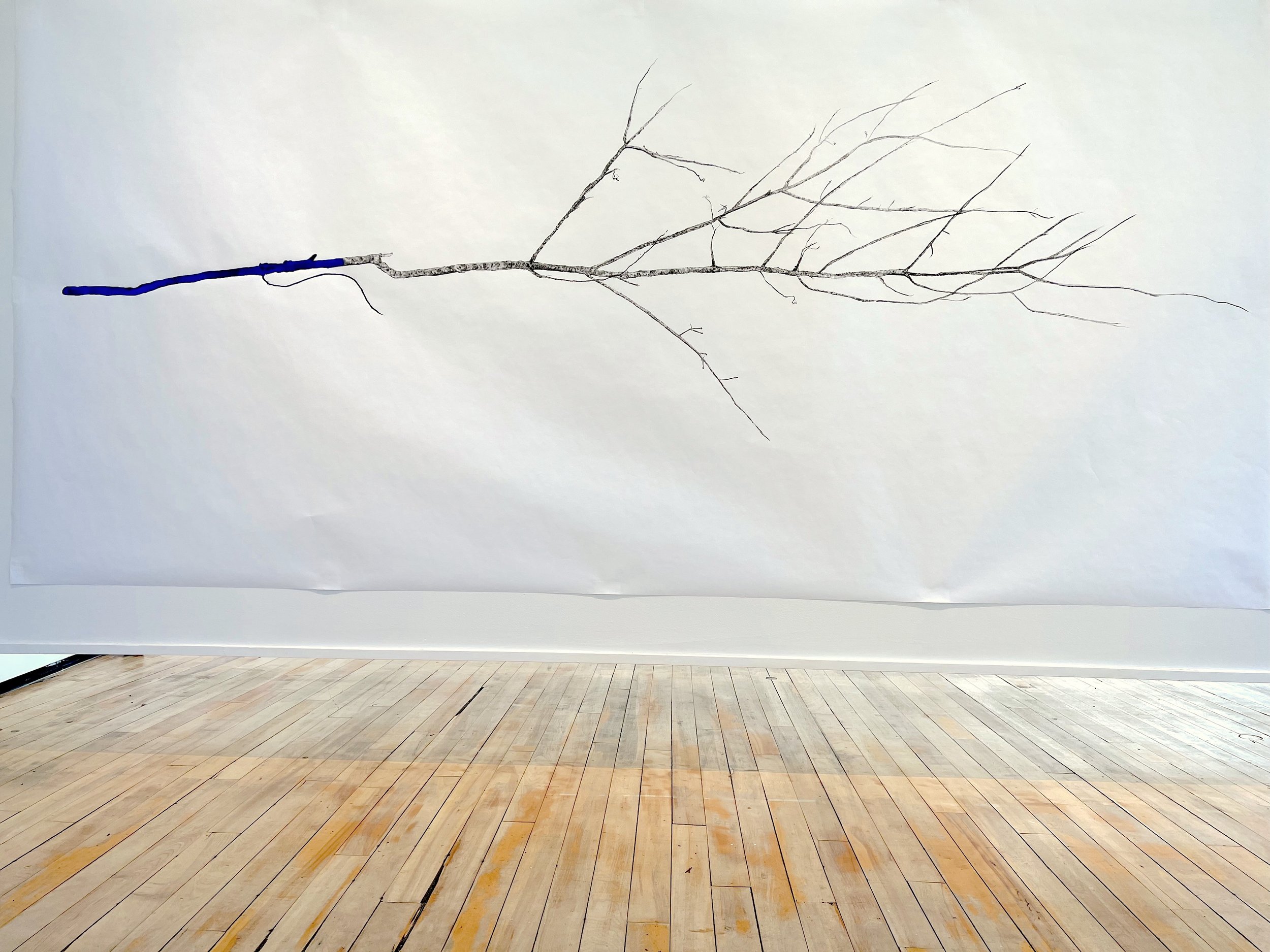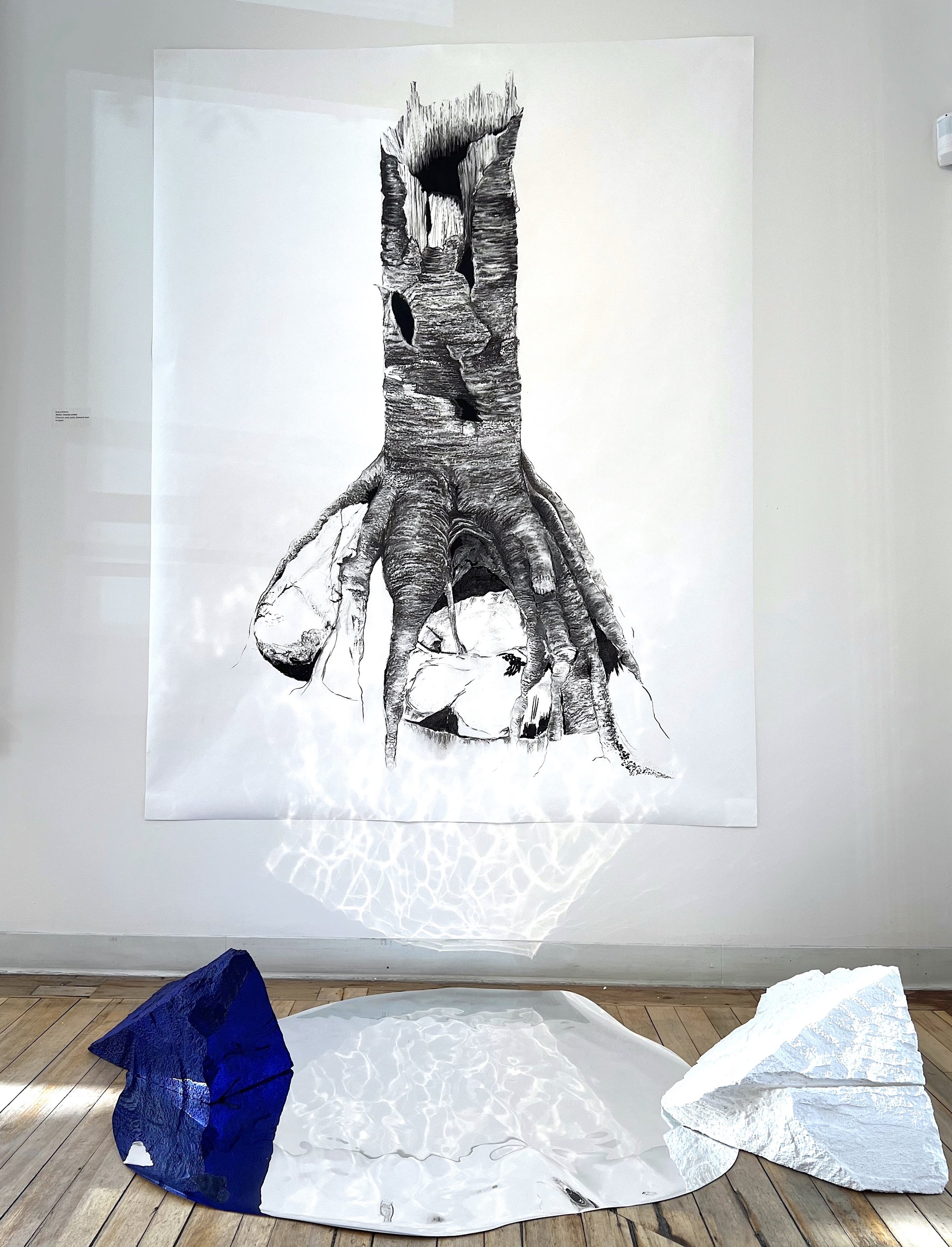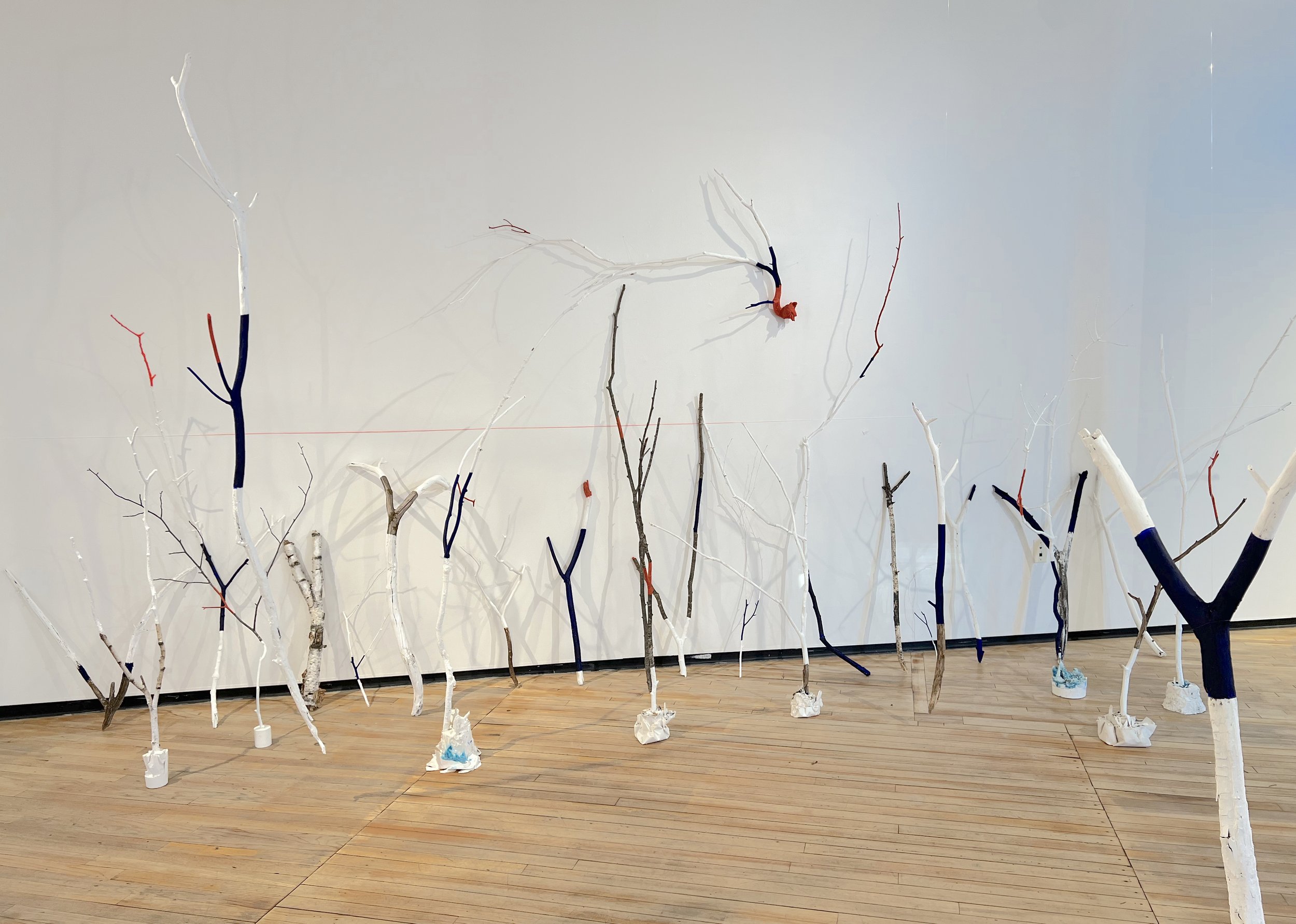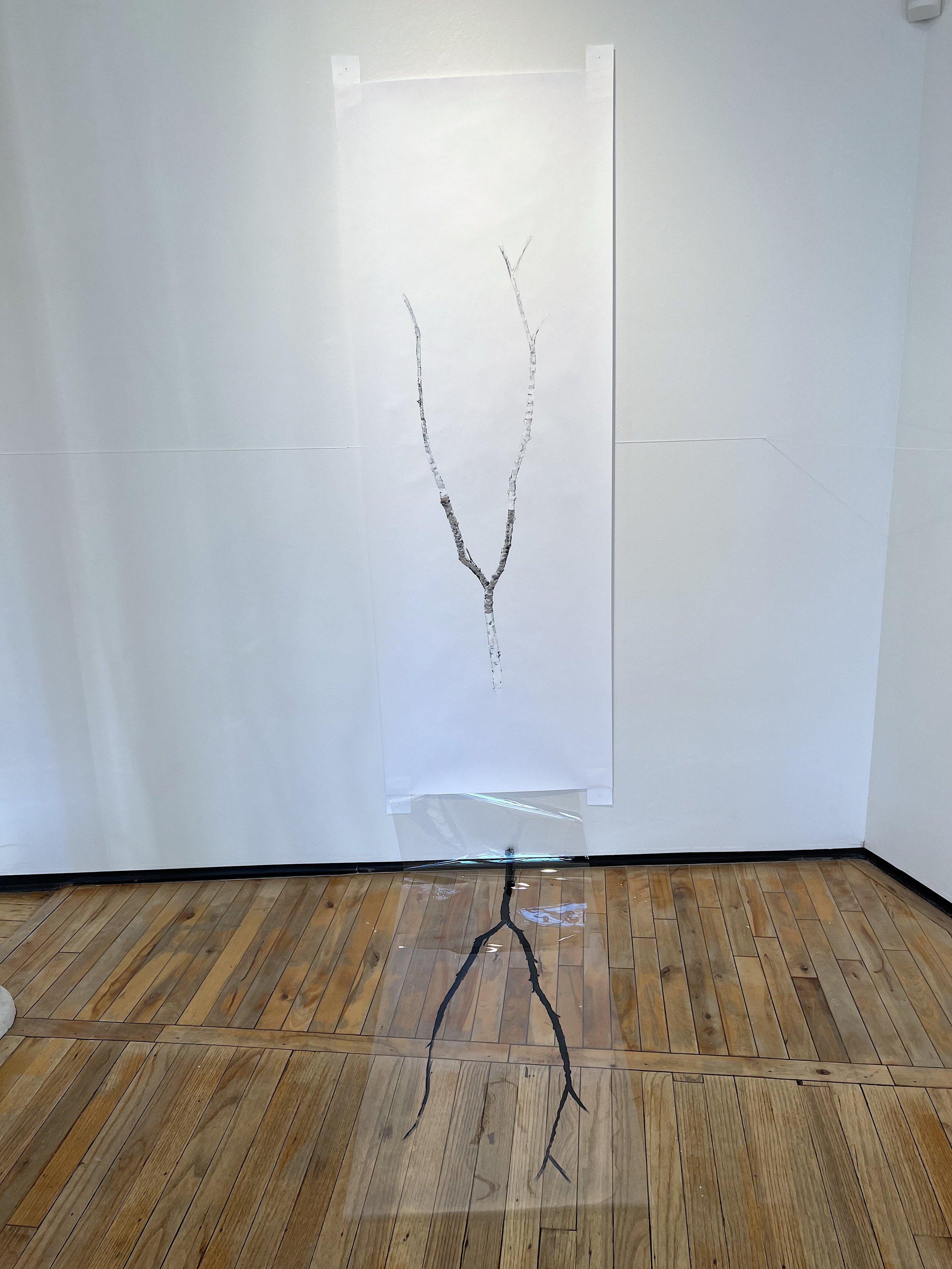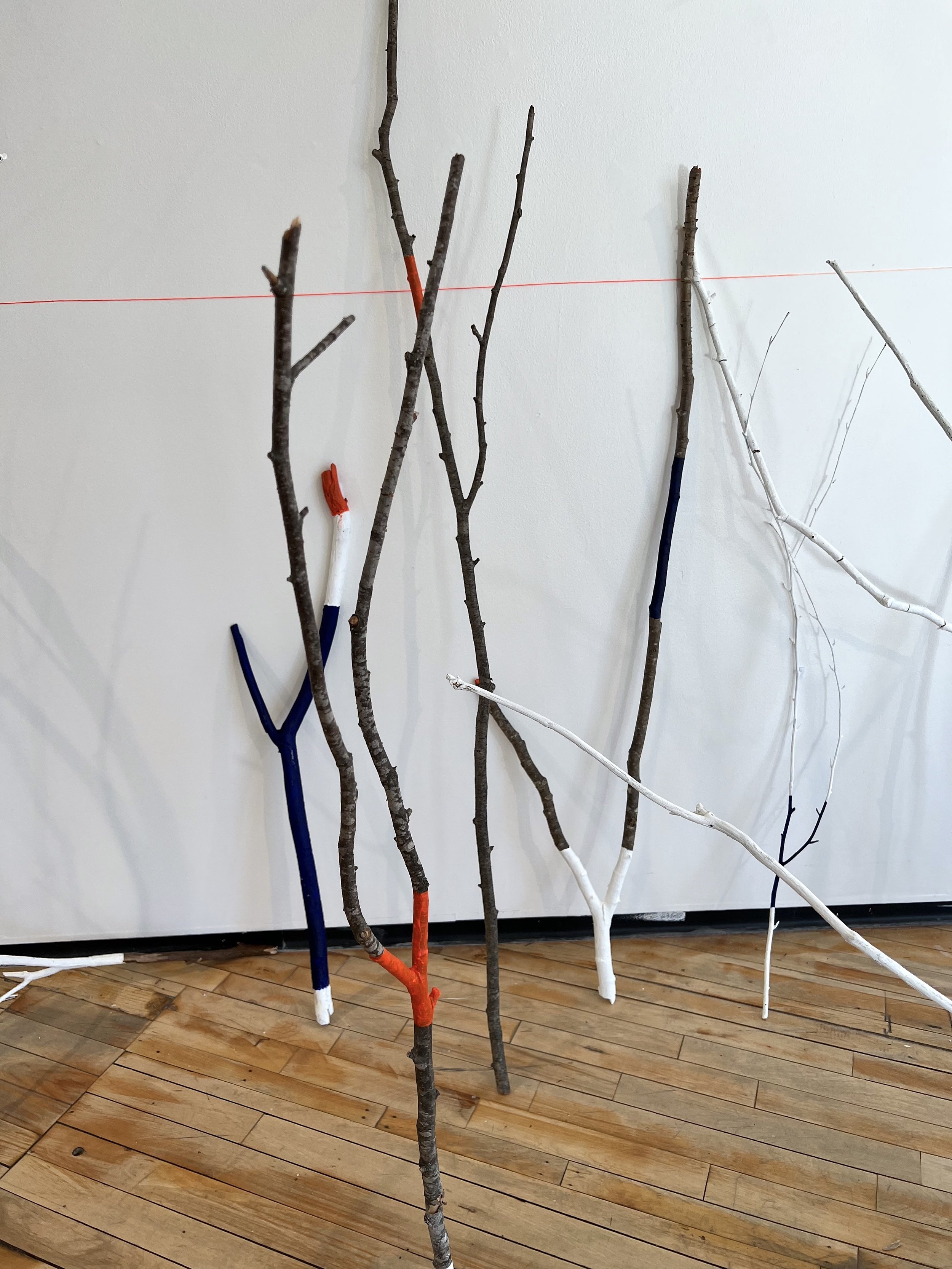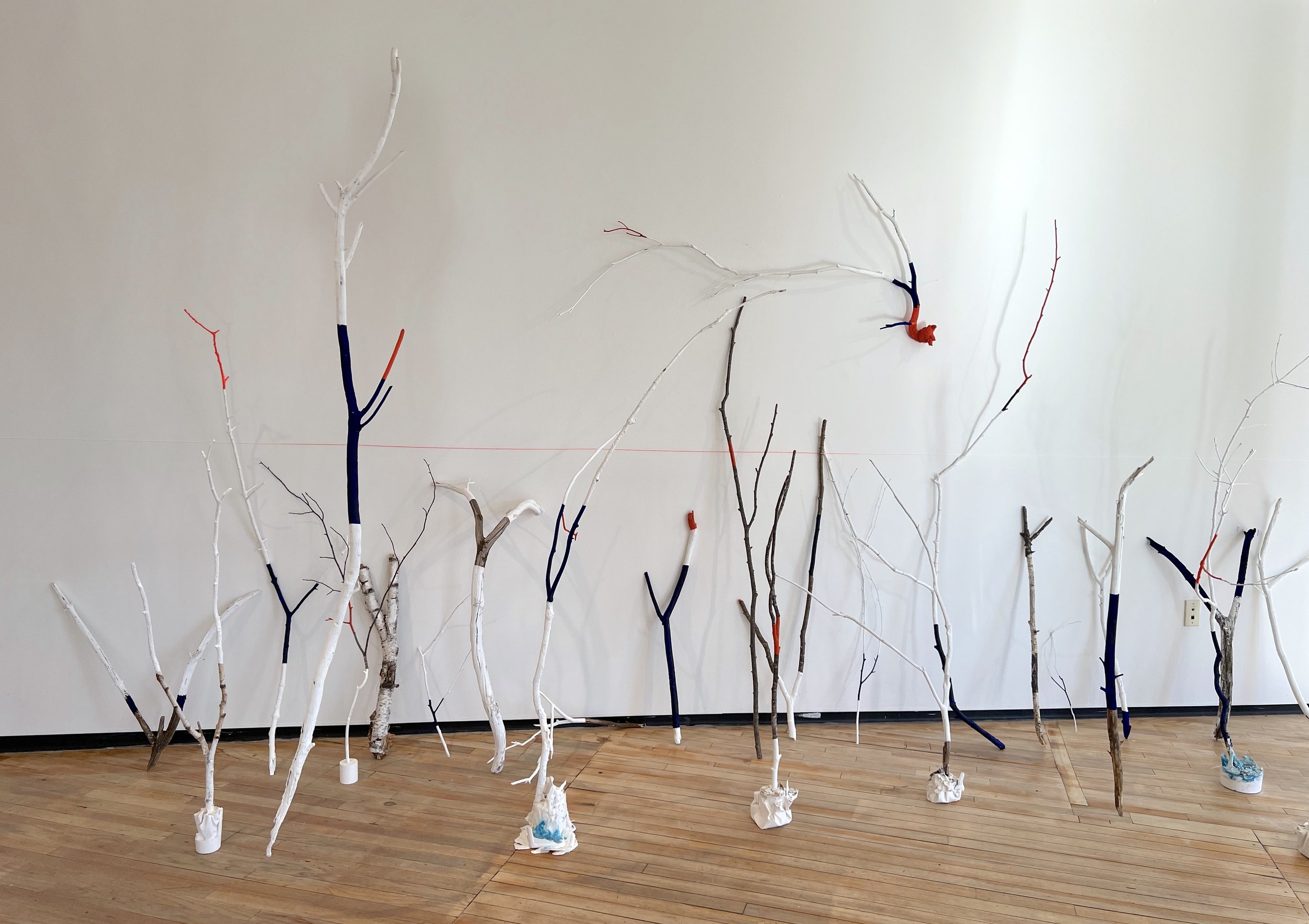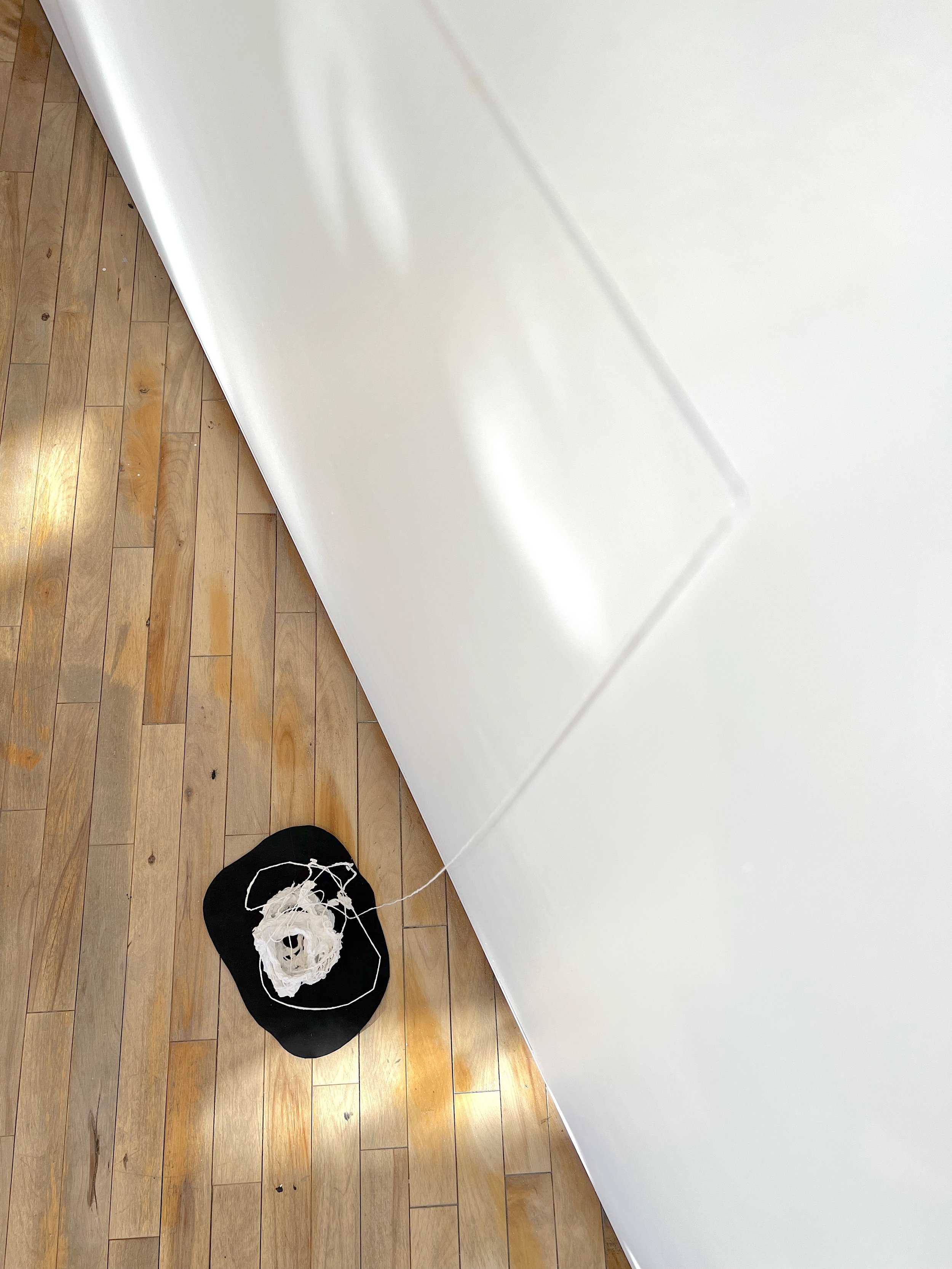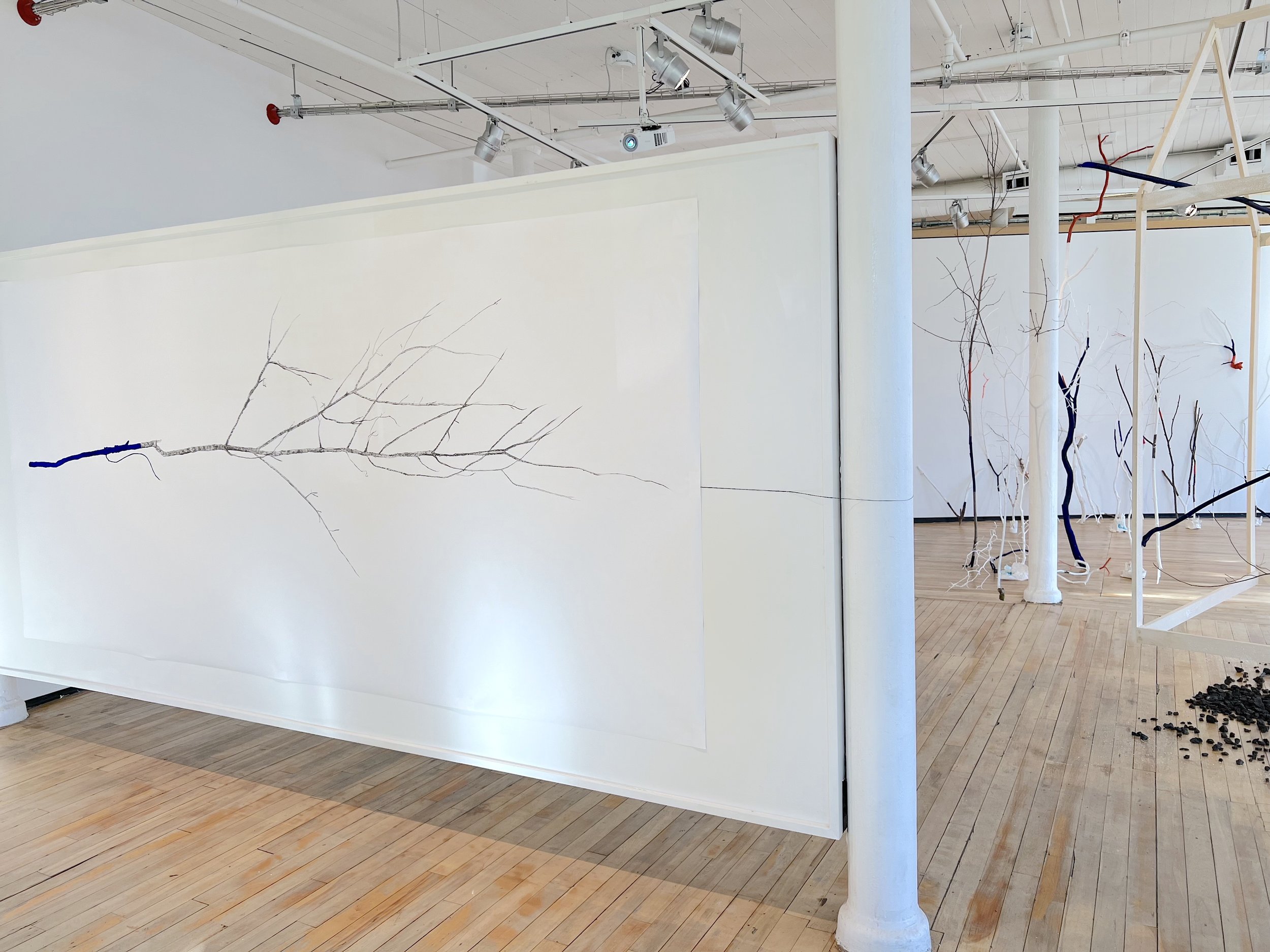AVA Gallery and Art Center October - November 2022
With imagery inspired by the forests of New Hampshire and the geologically active Black Sand Basin in Yellowstone, Reclamation: Through the Woods is an immersive, solo exhibition with installation art, video, and sculpture. The exhibition meditates on our experience of self, nature, time, and community recently altered by world events like the Covid pandemic and the full-scale invasion of Ukraine. Two years ago, the circumstances that necessitated social distancing also pushed us to retreat. Wilderness became a place of refuge. As I imagined it might, 2022 has brought a desire to rediscover or reclaim something, while recognizing it may be forever changed.
In the summer of 2020, our family camped our way across the country to ultimately settle in New Hampshire. During that time, nature became a sanctuary. I observed that for many it became a safe place during the worldwide pandemic riddled with uncertainties. In 2022, we continue to live through uncertainties both on personal and historic scales. It seems we can easily find ourselves in the woods at any given time.
My most recent exhibition This Side of the Sun explored perceptions of the passage of time against the backdrop of geologic time and human history. In recent years, I have reflected on the difference of how passing time has felt, both on a personal and collective scale, through extended periods of quarantine and isolation. In the Clifford B. West gallery of AVA, rows of sparse tree-like forms invite the viewer to meander through this forest that echoes the Black Sand Basin. There, sparse, white tree trunks stand as monuments to past and present geological activity, frozen in time by silica. Time itself has felt different during the pandemic. When visiting the Black Sand Basin in the summer of 2020, I was struck by the juxtaposition of my experience of time against that of the trees. These trees stood as monuments within the landscapes, as witnesses to times present and past in both human and geological history.
As I glance over the canopy of the New Hampshire Forest outside of my studio, I am struck by the trees standing in community as seen in Through the Woods. An unspoken connection, invisible roots, beneath the soil intertwined in a network, unseen but felt. We each have our invisible but felt connections to immediate community, extending beyond our own roots to people in distant parts of the world. The sculpture Root is a most direct representation of this. As a Ukrainian American, creating work with the theme of local and global community, in recent months, has resonated with me in a new way, no longer just considering the Covid pandemic, but in light of new world challenges, like the Invasion of Ukraine.
All of the branches displayed as trees for the Through the Woods installation were collected from the floor of that forest while on hikes alone, with family, friends or with the family dog through-out the seasons since summer of 2020. I did not know why I was collecting them at first. I realized that like the animals I was stashing away for future seasons, and I exercised faith, which often plays into my creative process. The sticks would tell me one day why I was collecting them. I was drawn to selecting sticks that had a fork in the road shape – a reminder of life’s choices, perhaps, or an echo of the hiking experiences with literal forks in the paths. The hours that followed in the painting experience of each of the sticks was meditative while, also, inadvertently offering study of them for the future drawings that can be seen in the drawing installation Echoes and Shadows. It points to the combination of awe and fear of being out in the woods, unfamiliar paths or unprecedented times.
In addition to gathering sticks, I picked up various roots. Root formations, branches with rivers echo the fractal designs within our own biology, reminding us of our visual connection to nature, as “we too, are nature,” says contemporary artist Eamon O’Kane. Within this installation, Rise illustrates being, both, of the earth and returning to the earth. We may feel the effects of biophilia without consciously thinking of these connections through the experience of both awe and fear.
Rise is an installation of six panels that depict outlines of human forms stacked on top of each other. The body outlines that can be seen as either rising out of the ground or returning to the ground. As the viewer moves, the overlap of marks moves in relationship to the viewer’s body’s movement, seemingly animating the panels. The viewer is welcome to walk all the way around Rise. The branches on the ground call to comparison the human form and that of tree branch lines encapsulating empty space into form.
Outside Within the large-scale charcoal drawing of a hollowed-out tree within the exhibition represents a way to be inside, out in nature. For the animals of the forest, it becomes a place of shelter from predators. Ultimately, we go outside to go within, to discover something out there that will illuminate something within ourselves. We grow through time spent in the actual and metaphorical forests, through the unknowns.
Ultimately this exhibition is an invitation. It is an invitation to journey through landscapes that can both delight and bewilder, to meditate on what is and what has been, and to ultimately consider reclaiming something for ourselves. It is not necessarily calling forth something from the past but making room for the new. For even anything from the past is inescapably renewed in the now. Reclamation: Through the Woods will be a different journey for every person who takes it, but as we are woven into an unseen tapestry of roots, there is something shared whether we journey alone or together.
About the “Reclamation House” installation:
“Reclamation House” is the new iteration of the previous installation, “Water House.” In 2019, visitors to the Rochester Art Center in Rochester MN were invited to throw volcanic rocks into the house filled with water, where they could see rocks from those who came before them.
In 2022, art center visitors could take a rock out of “Reclamation House.” In so doing, the scattering of the rocks outward, from the gallery space continues, into the world. Additionally, these rocks become touch points for individuals who will perhaps never meet, who have never shared the same space and time. However, as the trees of the forest have invisible roots that connect them to create the woods, humans have a shared connection within the context of human history.
Compared to the “Water House,” I intentionally pre-soaked the structural pieces of the house in a salt-water solution and let the water evaporate. This left sodium chloride and Epsom salt on the surface of the structure. Salt on the structure, flour and water in vessels hanging inside the house are signs of domesticity. Salt is often a symbol of preservation or purification. Flour and water symbolize that which sustains us, what we need at a minimum. Beyond just what sustains us, what do we need to reclaim individually or perhaps collectively?
“Water House” Rochester Art Center, Nov 2018-Jan 2019 can be seen below.
